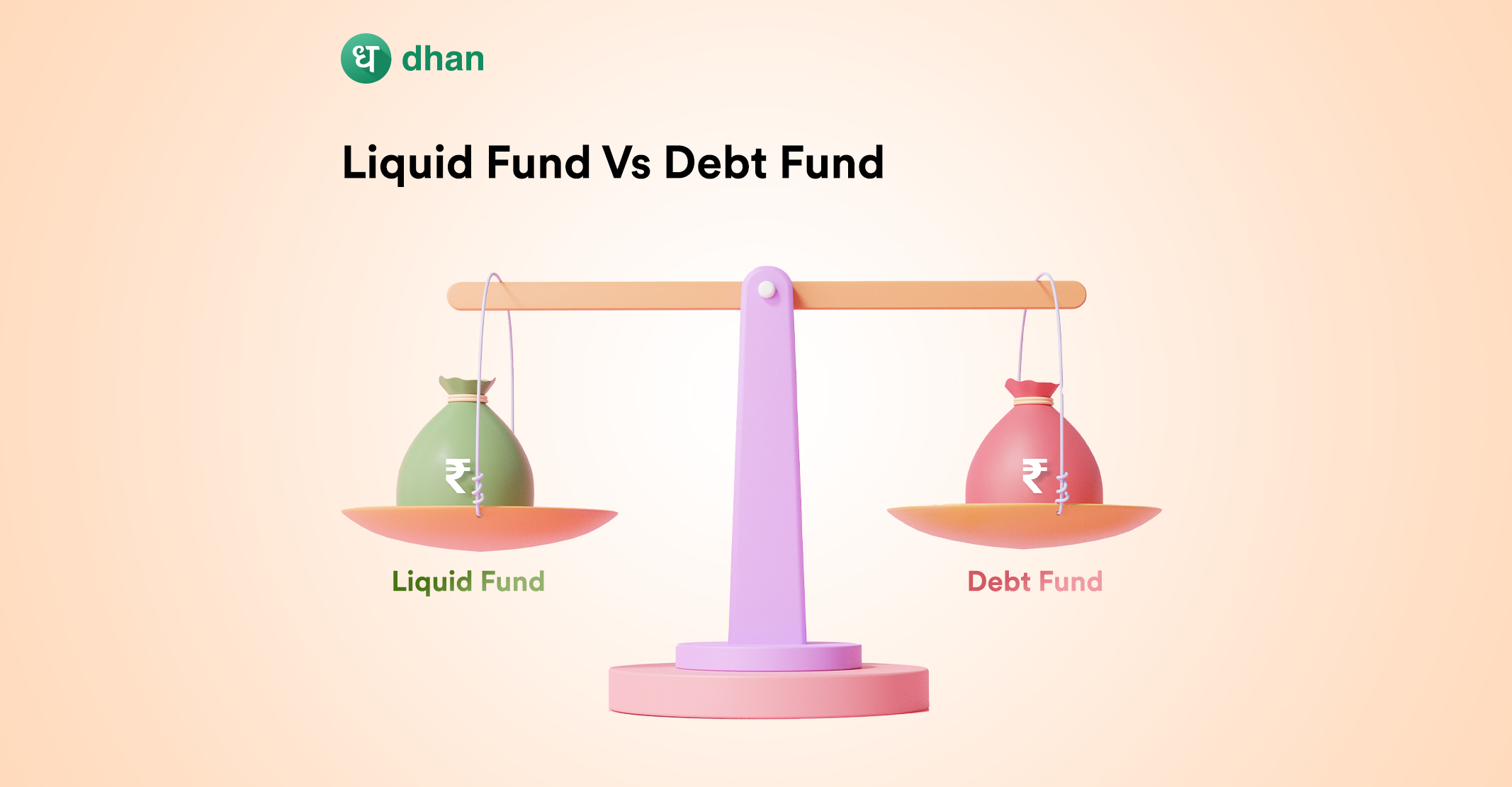When it comes to investing in mutual funds, there are many popular options available in India. Liquid funds and debt funds are two of these popular options.
While both liquid funds and debt funds are known to be suitable for short-term goals, they have their own set of pros and cons.
Knowing the difference between debt and liquid funds can help you choose the right online mutual funds for your wealth creation goals. That’s what we’ll help you with in this blog!
Before we get into the differences between liquid fund vs debt fund, you need to understand the basics of how they work. Let us start with a brief overview of both.
What are Liquid Funds?
Liquid funds are a type of mutual fund that invests in highly liquid, short-term debt instruments like treasury bills and commercial papers. These funds get their principal back in up to 91 days.
That’s why the risk that liquid funds carry is known to be relatively low compared to, say, equity funds.
In fact, investors with a low-risk profile or with short-term investment goals tend to invest in liquid funds. Other advantages of liquid funds include:
- High liquidity: As the name suggests, liquid funds are highly liquid and can be easily converted into cash
- Low risk: As they invest in short-term debt instruments, the risk associated with liquid funds is relatively low
- Higher returns than savings accounts: Liquid funds typically offer higher returns than traditional savings accounts, making them a better option for investors looking for a low-risk investment alternative
What are Debt Funds?
Debt funds invest in securities that generate a fixed income, like corporate bonds, government bonds, and commercial paper. You know what would be surprising for you to know? Liquid funds are also a type of debt fund.
You may have guessed it already but both liquid funds and debt funds invest in similar fixed-income securities. What varies in the maturity period. Debt funds are known to be ideal for investors who have a low to medium risk appetite and are looking at a longer investment horizon.
Some benefits of debt funds are:
- Solid returns: Debt funds typically offer higher returns than liquid funds, making them a preferred option for investors looking to generate better income
- Diversification: Debt funds offer investors the opportunity to diversify their portfolios by allocating investments in a selection of securities
Differences Between Debt and Liquid Funds
Here are certain parameters that can highlight the differences between both funds.
1. Investment Term
Liquid funds are short-term investment options, with an investment term of typically less than 91 days. On the other hand, debt funds have no restrictions on the investment term and can have a longer maturity period which can range from the short, medium, and long term as per the investors’ preferences.
2. Risk
You must know by now that liquid funds invest in low-risk securities that mature in 91 days. Thus, the credit risk and interest rate risk associated is lower. Debt funds, however, invest in fixed-income securities and have a slightly higher level of interest and credit risk compared to liquid funds.
3. Returns
Liquid funds generally offer lower returns than debt funds as they invest in short-term debt instruments. Debt funds, on the other hand, invest in fixed-income securities and typically offer better returns than liquid funds. However, the exact return on debt funds depends on various factors like interest rate fluctuations in the market.
4. Liquidity
Liquid funds are open-ended schemes that can be easily converted into cash. It means that you can exit the fund without incurring any charges. Debt funds, while also liquid, may have some restrictions on the frequency or amount of redemptions, depending on the fund and the regulations of the Top Asset Management Companies (AMCs).
5. Diversification
Debt funds allow investors to diversify their portfolios by investing in a variety of underlying securities including gilt funds, corporate bonds, etc. Liquid funds, on the other hand, invest primarily in short-term debt instruments, which may offer fewer diversification opportunities.
Both investment options allow certain benefits that you can enjoy depending on your unique preferences. So the question arises – is one fund better than the other?
Debt Fund vs Liquid Fund: Which is Better?
When it comes to choosing between liquid funds and debt funds, it’s essential to evaluate your financial goals and risk tolerance.
Liquid funds are debt funds but with varying degrees of risk among them. Some debt funds carry higher levels of risk, whereas others have a lower risk profile compared to liquid funds. It depends on your requirements and goals.
Both liquid funds and debt funds can be useful parts of a diversified investment portfolio, and investors may consider allocating a portion of their investment to both types of funds.
| Parameter | Liquid Funds | Debt Funds |
| Portfolio Maturity | 91 days | 1 day to 10 years |
| Investment | Fixed income securities | Fixed income securities |
| STCG | I-T slab | I-T slab |
| LTCG | 20% | 20% |
| Indexation Benefit | Yes | Yes |
Conclusion
Both liquid funds and debt funds are popular investment options in India, and each has its own set of pros and cons.
One is not better than the other, thus the choice between debt vs liquid fund will depend on your financial goals and risk tolerance. No matter which fund type you choose, make sure to evaluate it before investing.
Like this? Then you’ll love:



